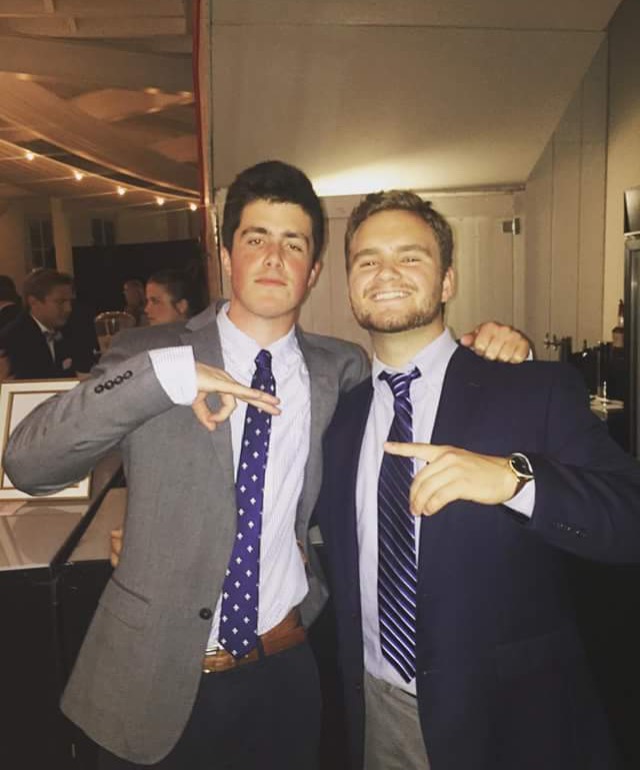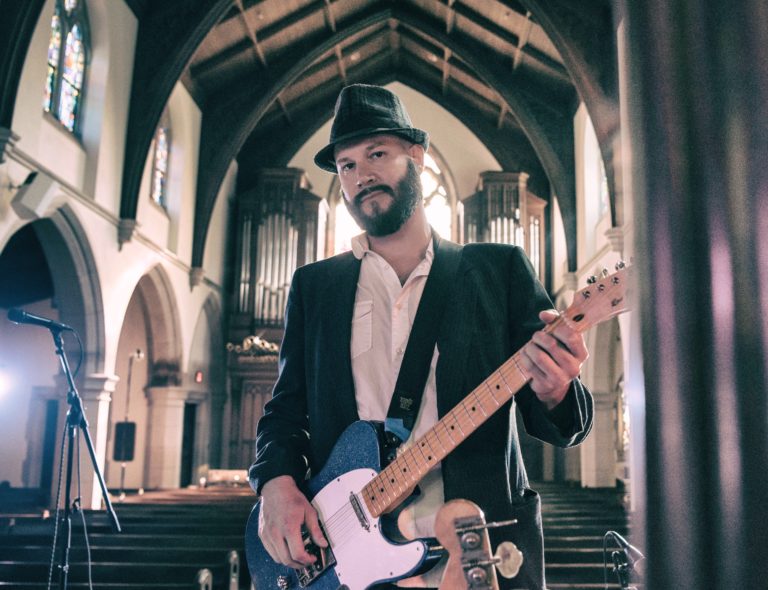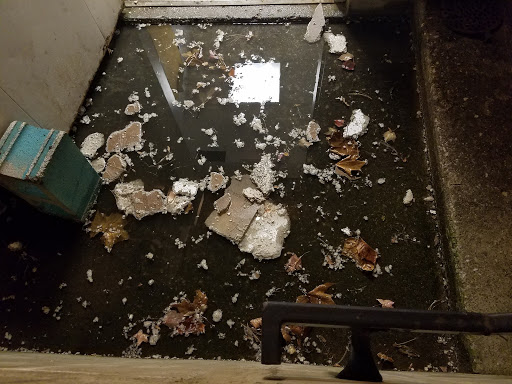Get in a festive mood this holiday season with these classics!
The lack of gender-neutral bathrooms on campus is unacceptable. Here’s why.
I’m sure we’ve all been in that situation at one point or another: you’re going along your daily business, shopping, going to class, or a meeting when all of a sudden you realize you have to go to the bathroom. You look around; you’re sure you remembered a bathroom around here somewhere. You wander around for what feels like hours, and finally, you find a toilet, only to have the sign on the door advertise the wrong gender.
For me, that’s every toilet. See, I’m agender, meaning I’m neither a man nor a woman. I don’t have a gender, and I don’t feel comfortable in gendered spaces such as bathrooms. Every day, I make sure to keep a mental map of all the gender neutral bathrooms on campus; it’s much easier than one might think. There are only two of them. Neither restroom is very easy to find, tucked into corners that no one goes to. There’s one on the first floor of BSC, all the way at the end of the hallway, past the door to Cowgill. It’s a unisex bathroom, a red door with a yellow laminated paper sign saying “lock the door for your privacy” which I always do. It’s generally a nice bathroom, two stalls, two urinals, two hand sinks. This is the only bathroom on campus I’m comfortable using outside of my own dorm room’s bathroom. The issue all comes down to accessibility. If you suffer from poor mobility then you are provided with things like washing facilities such as AHM wet rooms that can accommodate you. For people who are agender, the same principles of accommodation seem non-existent.
Just last week, I actually found a second gender-neutral bathroom on campus, this one in Beck. The third floor of Beck is the track, and in the turn with the exercise bikes, there’s a little cubbyhole with two water fountains and a door for the stairs. There is also a door marked with the little triangle people, point at the top for women, point at the bottom for men. I haven’t had the opportunity to use this restroom so I can’t speculate on the quality of it, other than the door, which looks more like a storage closet than a room I’d want to enter. There was a gender-neutral bathroom in Haupt, and I am sincerely hoping that remains the case with the new Carpenter Academic Center and every other building that we renovate or build from here out.
I have had many people ask me “what’s the big deal about bathrooms? Just use the one you feel more comfortable in.” For most people (almost all of them cisgender people), using the bathroom is just that easy. For trans people, it’s a much different story. As a trans person, so much thought goes into which bathroom you should use: how well you pass as the gender marked on the bathroom door, what other people could be in the bathroom, how friendly the people outside seem, what time of day it is, how badly you actually have to use the bathroom and whether or not you could actually make it home without using the bathroom here.
As a non-binary person (someone outside the gender binary of man and woman), I almost never see a bathroom that matches with my gender identity. On more than one occasion, I’ve had people ask me, directly after I came out to them as non-binary, where I use the restroom. I tell them I will only use a gender neutral or unisex bathroom. Apparently, that’s not an acceptable answer as many will then ask me which bathroom I use if there isn’t a gender-neutral bathroom. If there isn’t a gender-neutral bathroom, I don’t go to the bathroom. Which often leads to me being uncomfortable for much of the day and has lead to some medical consequences in the past too.
To me, that’s unacceptable. There are two bathrooms on this campus that I am comfortable using. And one of them is in my own dorm room. I deserve at least one public, gender-neutral bathroom in every building. I deserve access to spaces where I feel comfortable and safe.
Nothing But Thieves Consumes Indie Rock Listeners with New Album Broken Machine
Nothing But Thieves returned to the indie rock scene with sophomore album Broken Machine, containing consistent and enticing guitar and vocal surges and lyrics that may reflect the consciousness of both the band and their listeners.
The band, consisting of singer Conor Mason, guitarist Joe Langridge-Brown, guitarist Dominic Craik, bassist Philip Blake, and drummer James Price, appeared in 2015 with their self titled debut album. Their single “Trip Switch” earned a number one spot on Billboard’s Alternative Songs Chart, and gathered over 26 million plays on Spotify.
In September of 2017, Nothing But Thieves returned with Broken Machine, similar to their first album in its heavy, saturated guitar presence and rippling vocals. Broken Machine, however, is consistent not only in sound but in meaning; the album was stitched with intention, rather than their debut which acted as a sculpting piece into the alternative rock genre.
Most prominently in Broken Machine, Mason’s vocals carve through the firm guitar presence and riffs from both Langridge-Brown and Craik; often switching between soft isolation, with Mason’s rooted and smooth voice dominating the audio, and billowing screams concurrent with the guitar and drums.
“It’s Not Made By Design” encompasses these vocal transitions, with Mason’s rippling voice resonating past the music. The album’s top hits “Amsterdam” and “Sorry” follow the same suit, though an acoustic version of “Sorry” is included towards the end of the deluxe album that is far superior to its earlier counterpart; the acoustic highlights Mason’s voice in a romantic and mesmerizing fashion, contrasting the clean vocals that exist simultaneous with the instruments in the standard set of the track.
The same set up occurs in “Particles,” which has a piano version that concludes the album. The piano’s presence is simple and sets up a balancing act with Mason’s voice, which vibrates either between or above the chords. Mason truly extends his vocal reach in the piano version and bridges the longing and desperation present in the lyrics with his execution.
Broken Machine is connected track by track through a suture of emotion that seemingly reflects Mason’s fragmented self awareness, as if he is a broken machine. “Particles” hints at this theme: “And I’m a shadow of a ghost / It’s feeling as if somebody has taken host /Babe, I don’t wanna make a scene / But I get self-destructive / And it’s driving you away.” Other lyrics reference this awareness, though becomes depressive, such as in “Soda:” “I don’t wanna be myself / Just wanna be someone else.”
Nothing But Thieves also exposes their global consciousness. From an interview on The Independent with Nothing But Thieves, Langridge-Brown included that “‘All the songs on the album are things that we’ve gone through or spoken about: Trump, religion, bigotry…’”
This is evident in “Reset Me,” which demonstrates a critical paranoia of American politics: “Don’t you dare protest / Red and white and blue / We’ll look after you / ‘Cause we know what’s best.” Similarly, “Live Like Animals” presents societal commentary, claiming “The TV tells us to be scared / We’d make a difference if we cared / We put our lives all up for sale / We get our truth in the Daily Mail.”
Broken Machine peaked at #46 on Billboard’s Top Rock Album Chart the week it was released, and Nothing But Thieves total monthly listeners on Spotify has grown to 2,300,007, a significant shift resulting from their evolving respect in the alternative/indie rock genre.
Their second album marked a shift in Nothing But Thieves, not in quality, but in craft. Broken Machine is fastened with resounding vocals, crisp and growling guitar riffs, and an established theme of crippled humanity that captivated listeners and critics into stable consumption of their music.
Here’s how to manage end-of-semester stress
Post-Thanksgiving Break is perhaps the hardest time of the year for us college students. Morale is low, stress is high, and everything is due all at once. If you’re like me, you handle end-of-semester stress by binge-sleeping instead of actually confronting the problem. Unfortunately, Zs don’t get degrees. Instead, here are a few more productive ways to get you to the end.
Time Management
Google “end of semester stress,” and this will probably be the first thing on every listicle that pops up. And it’s gonna be the first one on this one too. If you haven’t done so already, it’s time for you to micro-manage your schedule for the rest of the semester. What needs to be done, and when are the due dates and is there any video conferencing that could help? Look at your calendar for the next two weeks and set aside chunks of time solely to work on papers and projects or to study. For overachievers, go a step further and plan where you will do this work. Choose a place that is the best place for you to be productive, whether that’s in your dorm room, the library, or a cafe off-campus.
Ask for Support
You don’t have to manage your stress alone, whether you ask for support from your family, your friends, or even a counselor. If you need to vent about how much you have to do and how you don’t have any time to do it (before you do the previous point, or course), go to someone. If need be, explain to your friends that you really need to focus on completing your work or studying and can’t hang out as much. If the amount of stress starts triggering depression or anxiety, speak with a counselor or your RA.
Don’t Be Afraid to Seek Help
There are several different ways to get help on any topics you’re struggling with. Go to the Writing Center, where they can help you not just with papers but also presentations; go to your professors, who know exactly what you need to know on finals exams; go to tutoring, and get even more help from your fellow classmates. Just because it’s the end of the semester doesn’t mean you can’t start utilizing these resources now if you haven’t done so earlier.
Get Enough Sleep
Please get quality sleep. I cannot stress this enough (pun 100% intended). You will not survive the semester living in a body propelled forward only by desperation and caffeine. Even if we don’t know why we need sleep, we do know that it is essential and beneficial for mind and body. If this is something you are struggling with, you may want to look into a company like Leesa, who offer high quality bedding items- from sheets, pillows, mattresses and more to help with getting you a comfortable night’s sleep. Sleep boosts cognitive function, and without it, learning is far more difficult. If you want to remember anything you’ve studied, SLEEP.
Take a Break
Yes, you are allowed to take a break. Whether that’s taking a nap (again, please don’t forget to sleep), going to the humane society to cuddle with animals, or attending Stress Fest events with friends, make time to take a break. Take time to do the things you love and relax for a few hours; smoking marijuana like this girl scout cookies strain will definitely give you a well-needed distraction for a couple of hours. If this isn’t for you, there’s an endless number of options to relax you as an alternative, such as taking a bath, reading a book or taking time to meditate. Unless you have incredible self-control, maybe don’t start that new series on Netflix. Sometimes, stress can be overwhelming and makes it difficult to focus on anything but how stressed you are. That’s why taking a break to put yourself in a better mood is perfectly acceptable, even if it means putting that work aside for a few hours. If it allows you to concentrate and get quality work done, then it’s worth it. It is also a good idea to try and think of how you’re going to reward yourself once you have finished this years studies. Some of my friends have used joining the Cultural Care Au Pair programme as a motivator. Knowing how much this meant to them they were even more determined to work as hard as they can so they could enjoy it as much as possible.
Life isn’t just a series of deadlines to meet and grades to maintain, although as college students, it certainly seems that way right now. You will get through this, one way or another – just don’t forget to take care of yourself along the way.
- Campus Resources
- The Writing Center, ACE (Library Basement)
- In order to schedule a Writing Center appointment, you first need to register with WCOnline – http://transy.mywconline.com. Office hours are 9:30 a.m. to 5 p.m.
- On-Campus Counseling (located in the back suite of the Campus Center)
- To schedule an appointment, email counseling@transy.edu or call the Counseling Center at (859) 281-3682.
- The Writing Center, ACE (Library Basement)
- Off-Campus Resources
- 24-hour Mental Health Crisis Line for Lexington, KY: 1-800-928-8000 (operated by Comprehensive Care)
- Good Samaritan Hospital Emergency Services for Behavioral Health: 859-226-7060
Rambler Weekly Playlist: December 7th
Avoid all the early Christmas tunes with this mellow playlist.
Thanksgiving as a vegetarian: can I eat that?
The American Thanksgiving holiday is incredibly similar for most families. Wake up and head to whichever room of the house has a television. Sit with your family, a cup of coffee or hot chocolate or maybe even apple cider, and watch the Macy’s Thanksgiving Day Parade until it’s time to start working on the best meal of the year.
For my family, it’s always a day-long celebration of food, cooking, puzzle-making, laughing. Peeling potatoes, snapping beans, ripping up bread to make stuffing, and of course the turkey. When you think of Thanksgiving dinner, every family has their own little idiosyncrasies: mine is lima beans. But the main components stay the same: turkey, stuffing (or dressing), mashed potatoes and gravy, green beans, corn, rolls, often some sort of casserole, cranberry sauce; the list goes on.
But, if you’re like me, and you don’t eat meat, then your options are severely limited. I’m lucky if the gravy is in its own container to the side rather than already on the potatoes, especially if I don’t get the potatoes first. At my grandparent’s house, we all eat surrounding one big table, passing the food around in a circle. So, if the food goes very far from where it started, there’s a good chance it’s got some gravy or bits of mashed potatoes off my granddad’s plate or some of the cranberry sauce from my mom’s.
This year we were at my Aunt and Uncle’s new house, so the food was set up a little differently. We each had our place setting, arranged conveniently around the house, wherever there was room. All the food was placed on an island in the kitchen, so I wouldn’t have to worry about other people’s plates getting in the food, but that doesn’t mean that it didn’t have meat in it. I walked around and for each dish, the same question bothered the rest of the family: “can I eat that?”
Typically, when I think of Thanksgiving meals, my main focus is on the side dishes and not the giant bird. It always has been. But since I decided to not eat meat, mainly for health reasons and environmental impact, it’s gotten much harder to enjoy a large Thanksgiving meal with family. I can’t have the gravy (made with usually turkey drippings in my house), the green beans (usually, they’re cooked with ham), sometimes the stuffing (it can be made with chicken stock, or have bacon added), many of the casseroles (bacon or sausage or some other meat), obviously the turkey. I can usually eat the corn and mashed potatoes and dinner rolls, but that’s about it unless I bring something myself. This year, my immediate family brought an asparagus casserole that is almost entirely vegan, with the exception of egg-whites, to share with the extended family.
Another thing that makes family Thanksgiving difficult to maneuver as a vegetarian, is that everything is made with family recipes. So I can’t google whether or not Mawmaw’s corn pudding has gelatin or chicken stock in it (it did not seem to, but I’m still unsure what all is in it). Usually, if I can’t tell whether something has meat in it or not, like with most casseroles, I won’t eat it. Much of my family knows I’m vegetarian, but that means that they’ll point out the stuff I can’t eat rather than making something that I can.
Thanksgiving is still my favorite holiday. It’s about family and loved ones and spending time together rather than gift-giving or religious ceremony. It’s about coming together after a hard year and putting it all behind us and eating our fill. Thanksgiving is about finding the good things in the hard times and bringing the family together with good food and company and football. But even with all that, I can’t help but feel it’s lost some significance for me. All the food is out of my reach.
It’s like being a little kid again before I could reach the counter, with my mom walking through the kitchen, me on her hip, pointing out the things she thinks I’ll like. I have to consult with the whole family before I begin eating anything to make sure I won’t end up sick afterward. And who knows whether they’re remembering the recipe exactly, or what they did to change it “to make it better.” I just have to use my instincts and hope, and for many meals, that’s the best I can do.
A Little Riff Around The Edges: Meet J. Tom Hnatow
What do the folk-indie band Vandaveer and legendary Beatles member Ringo Starr have in common?
Meet their shared link, J. Tom Hnatow: local musician, producer, and sound engineer at Shangri-La Productions, a recording studio located in downtown Lexington. Hnatow has been playing and touring with the folk band Vandaveer for about 10 years. Along with playing on Vandaveer’s past couple of records, Hnatow was given the opportunity to play dobro on the two songs by Vandaveer that are featured on Ringo Starr’s new record, “Give More Love.”
“Hearing those songs – with the voice of a Beatle – come out of the speakers for the first time was definitely a special feeling,” he said in a recent interview.

Hnatow was born in a city near Allentown in rural, eastern Pennsylvania, and grew up with an exposure to music thanks to his father, who was chemistry teacher and part-time musician. “He would vanish at night, and come back with his saxophone case smelling of smoke and a bar. That smell was always so intoxicating – it smelled like nothing I knew or understood. So music always seemed mysterious and interesting to me,” he said.
His parents forced him to take piano lessons at a young age but it wasn’t until he got a guitar at 16 that “I learned to really enjoy the process of making music. (And of course, am so thankful for those piano lessons now!)”
He said it wasn’t until he moved to Washington D.C. after college that he “stumbled” into a musical career playing with the band These United States..
“I was lucky enough to meet a whole lot of amazing people making a whole lot of amazing music (who let me come along for the ride) in a very short time,” he said. “I loved it, but it never seemed like a career path. How do you get to be a professional musician, especially if you’re not a classical player?” he said.
But then he realized: “I was playing to much to be able to keep a full-time job.” Work with that band is what eventually led him to Lexington.
“I first worked with Duane Lundy way back in…2005 or 2006, and my old band, These United States, recorded two records with him. Gradually, I ended up doing a lot of remote recording work for the studio, and when I had a chance to come to Lexington and actually work with him in person, I jumped at it!”

Now, he is into a wide variety of music and instruments. “My main touring guitars this year have been a Dusenberg Starcaster and a Ron Jeffreys custom B-Bender. I play a Hofner bass and a Derby pedal steel … those are the main pieces of gear. But in the studio I’ll use just about anything!” he said.
“I don’t know if I have a specific ‘genre,’ per se – I like songs, first and foremost. There’s something about storytelling and structure that appeals to me,” he said. “I like thinking of each song as a movie, where my job is to fill in the spaces around the words and help paint a story.”
He said there are too many great guitarists to pick just one as influencing his playing style.
“I love players who are able to color inside the lines…less huge guitar solos, but more texture and tasteful parts.” he said. “Mike Campbell (Tom Petty’s guitarist), Daniel Lanois, Marc Ribot’s work with Tom Waits…those are some that immediately come to mind.”

Hnatow has been involved in various projects throughout his music career. The band he was an active member of, These United States, disbanded in 2012.
“Like most relationships, bands have a certain lifespan – they ebb and flow – and that band hit a point where everyone was interested in doing something else by the time we stopped playing,.” he said.
Since then, Hnatow has kept himself busy with a wide variety of music projects.
“I’ve toured with the Mynabirds and Joe Pug and am currently on tour with William Matheny & The Strange Constellations. I’ve made records and toured with Vandaveer. And I moved to Lexington and started working at Shangri-la as a producer, engineer, and session musician. I’ve been constantly busy with a lot of really great projects!” Hnatow said.
Along with his music career, Hnatow was given something else that has stuck with him—his unusual nickname: “The Llama.”
“I wish there was a great story to this! It’s basically a random name from an old band mate of mine that stuck, over years and years and years! There’s no logic behind it whatsoever,” Hnatow said.

“I’ve always loved being in the studio – there’s something about being there for the process of creation that is really special. Taking that technical knowledge – all those mics and all that gear – and using it to capture emotion is truly magical,” he said.
Hnatow’s advice for anyone wanting to pursue a career in music is to “figure out a way to make it sustainable. Play the long game.” Any new and upcoming artists will need help along the way. One thing you may need help with is getting your music mastered. You could try looking at different services local to you, or you might be interested in the online process. Online Mastering could be a viable option for any new musicians who want their music professionally engineered.
“I think a lot of people go “all in” too soon – and then end up broke and disillusioned,” he said. “If you stick around long enough, it’s got a good chance of happening…but figure out how to stick around for that!”
Forrer Hall Floods Before Break
At approximately 9:00 PM on November 20 the fire alarms in Forrer Hall activated. As students evacuated, many noticed that water had begun to leak from the walls and ceilings of the lower floors. The first and second floors of the building, as well as the extensive basement, quickly flooded with water, plumbing, and detritus of dorm life that was swept along with the substantial waters. A sprinkler pipe on the second floor had burst, discharging a substantial amount of water into the rooms and halls of Forrer. After using sites like paultheplumbernh.com to find out what to do, the water mains were turned off and an emergency plumber was called.
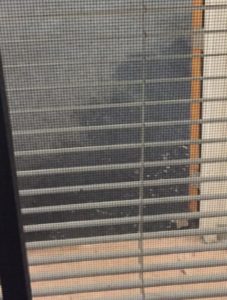
“I was putting my laundry in the dryer, and I heard above me a big huge thud, and something rolling down, and water started pouring down, just pouring down,” said first-year Whitney Carter.
“We saw the water coming down the stairs, and from the corners of the hall, flooding the back stair, going into Back Lobby, flooding the entire laundromat,” said first-year Grace Kim.
The waters stood at least 1 inch deep for just over 2 hours as Department of Public Safety officers, Residential Advisers, and other officials checked room-by-room to assess the damages and make initial inroads on the cleanup. ServPro, local a cleaning company, arrived to assist with the cleanup at approximately 11:30. If only a company like Apple Leak Detection had been hired to prevent this issue from happening to the building.
According to University spokeswoman Michele Sparks, the flood caused “no structural damage” to the building. However, photographic and video evidence suggests that the damage to carpets and personal belongings may be considerable.
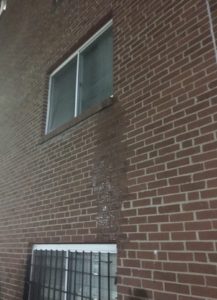
“I’m worried about my belongings, because, I actually thought about it, what if this is an actual problem. I have everything that I really need, but I would like other things too,” said first-year Kallie Olmeda.
At approximately 11:30, most students were informed they could return to the dorm, either to collect their belongings or to reoccupy their rooms. Sparks said that 10 rooms were impacted, with 7 students “displaced” to other rooms. These students were informed that their rooms had not been cleared for reoccupation, and these students were directed to speak with Kevin Fisher, the Director of Residence Life. Sparks expressed confidence that all rooms affected would be suitable for reoccupation by the end of the upcoming Thanksgiving break.
Forrer has flooded before, though Sparks insists that these events “have all been unrelated to one another,” calling them “random incidences.” Sparks emphasized that, according to University assessments, there is no continuing danger to students in the building.
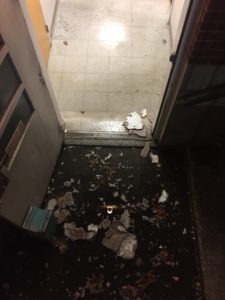
During this year’s Crimson Affair, leaks interrupted the event and the building was evacuated for about an hour. Earlier this year, the building experienced minor flooding.
In 2016, many students had to move to other dorms for several weeks of May Term while the University contracted a cleaning and repair crew to move through the building and remove water damage from a flood that resulted from burst pipes on the front side of the third floor.
Sparks expressed confidence that Forrer will continue to be usable for the remainder of the academic year. She added that the Campus Center and Forrer will likely be renovated starting this summer, pending the securing of funds for the project.
With damage on this scale, there probably needs to be a disaster cleanup from a restoration company that specializes in these types of problems. It needs to be done safely and efficiently so students are not afraid to move back in with the worry that it could happen once again, and the building is restored in the way it should be, with damage fixed and marks removed.
If you suffer from regular leaks, whether that be in your home or in a commercial building, it is essential that you contact somewhere like TDT Plumbing so that they can not only fix the current leak, but also explore what is causing the problems. Often, when leaks are regular, the pipes are old and damaged (usually from corrosion) and you will continue to have problems until they are replaced. It is best to nip it in the bud and address the issue before you get problems with mold and any structural issues.
This page will be updated as this story develops. Reporters Kayla Gross, Lexi Lucas, and Hayle Hall contributed to this story.
TNotes Summary Nov. 13th—17th
- The Center for Academic and Professional Enrichment is excited to welcome Robin Prichard as our new coordinator of pre-health preparation programs. Robin will work closely with the Pre-Health Committee to prepare our students for careers in the health professions. Her office is in the CAPE, Old Morrison 107.
- Celebrate International Education Week by applying to study abroad next summer or next year. An information table will be outside the Cafeteria on Tuesday and in the Raf on Tuesday, Nov. 21, during open hour. Applications for summer scholarships are due Dec. 1 or Jan. 8.
- Students Nellie Heitzman and Mark Sirianno won second place in the Botany and Microbiology undergraduate poster competitions, respectively, at the Kentucky Academy of Sciences meeting.
- Are you interested in sustainability? Would you like to help make Transy more “green?” Want to help educate our campus and move sustainability efforts forward at Transy? Join us Thursday, Nov. 30, during open hour in the Campus Center’s Engagement Center to see how you can be involved.
- Professors Zoe Strecker, Kurt Gohde, Kremena Todorova, and Jack Girard are included in the Wilson Gallery’s “State of Time” exhibition Nov. 16 through Jan. 3 at Georgetown College. The exhibition—which is free and open to the public—features works by faculty members from Kentucky’s flagship colleges.



